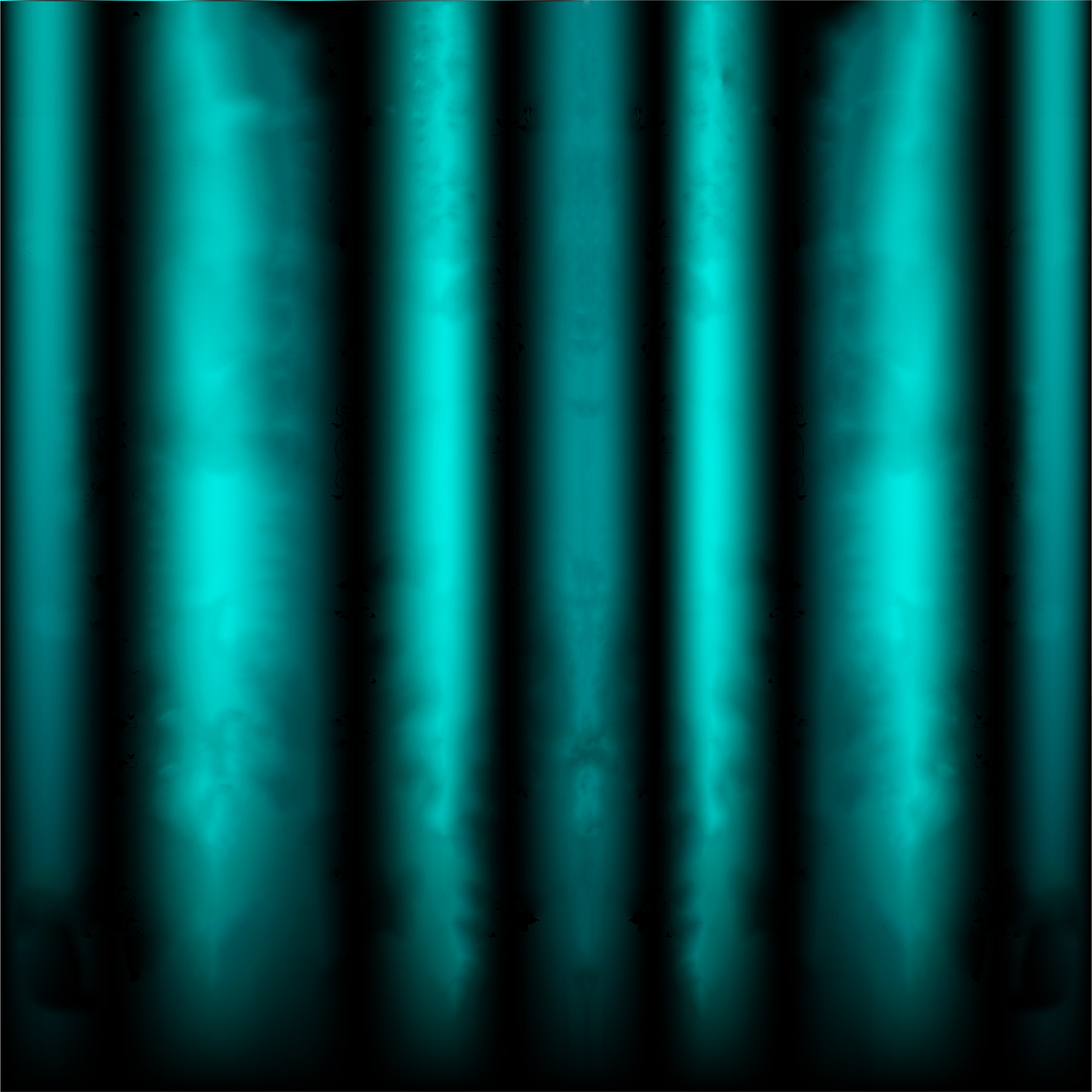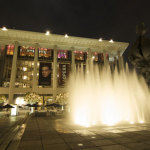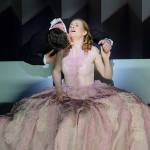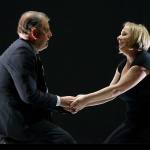Cast (Dido and Aeneas)
Dido: Paula Murrihy
Aeneas: Liam Bonner
Belinda: Kateryna Kasper
Sorceress: John Holiday
Second Lady: Summer Hassan
First Witch: G. Thomas Allen
Second Witch: Darryl Taylor
Spirit/Sailor: Brenton Ryan
Cast (Bluebeard’s Castle)
Bluebeard: Robert Hayward
Judith: Claudia Mahnke
Conductor: Steven Sloane
Director: Barrie Kosky
Associate Director: Ute M. Engelhardt
Scenery and Costume Designer: Katrin Lea Tag
Lighting Designer: Joachim Klein
Chorus Director: Grant Gershon
This performance was the first double bill I had ever seen at the LA Opera…. and what an interesting double bill it was! The delicate Baroque sound world, heavy use of chorus, English libretto and conventional storytelling of Purcell’s Dido and Aeneas are worlds away from the expressionistic 20th century score, two-singer cast, Hungarian libretto and strange surrealism of Bartok’s Bluebeard’s Castle. Yet as director Barrie Kosky has pointed out, the two works have more in common than they seem to at first glance. Both are based on famous old stories, both are intimate tragedies involving a man and a woman, both depict the dangers of obsessive love, and both contain the themes of arrival and departure. And I’m sure that neither one is easy to stage successfully, because neither one is a particularly “accessible” opera. Dido’s libretto is a hoary myth-based melodrama that would be slightly laughable without Purcell’s moving music, while Bluebeard is a dreamlike psychodrama that’s vague in meaning, requires deep thought and personal interpretation on the audience’s part, and has no hummable melodies.
So how did Barrie Kosky’s productions tackle them? For starters, by giving both a very minimalistic Regietheater aesthetic. Both were performed on simple unit sets, with a contemporary look (Dido’s costumes were a stylized combination of modern and Baroque, while Bluebeard was purely in modern dress), but no concrete settings or any attempt at visual “realism.” The emphasis was exclusively on the music, characters and raw emotion. Did this approach make the operas more accessible and affecting? I don’t know. This performance was my first time seeing Dido in an opera house, though I already knew it through recordings, and my first-ever experience with Bluebeard. But one thing was certain: the unique sights and sounds of these two productions weren’t easily forgotten.
Kosky’s vision of Dido played out in a narrow space near the edge of the stage, where the only scenery was a ridged gray backdrop and a long white bench. The curtain rose (before a note of music was heard, with the houselights still bright) to reveal all the singers sitting motionless on the bench, staring out at the audience. At the center sat Dido, the massive pannier skirt of her rose-colored gown keeping her at arms’ length from the others. Kosky has explained in an interview that his goal was to imitate the look of a Baroque tapestry and to illustrate the “lonely at the top” nature of Dido’s life as queen. The opera’s whole action took place on and around the bench, with the chorus sometimes singing onstage, but the rest of the time retreating into the orchestra pit, leaving the principles alone.
Yet Kosky livened up the simple setting with vivid stage action, not shying away from playing parts of the story for laughs. Dido’s cheerful handmaidens were hyperactive comic relief. The evil Sorceress and her witch attendants were figures of pure camp, portrayed by bearded countertenors in dowdy dresses (though the Sorceress later donned a pink gown that mocked Dido’s), who homoerotically fondled each other. Dido and Aeneas themselves were no staid courtly lovers, but just as passionate, sensual and physical as a pair of teenagers, and their final scene played out like a mood-swing filled, petulant teenage breakup (which is arguably how it’s written in the libretto, intentionally or not), with Aeneas’s exit followed by a comically loud door-slam from offstage. But the drama turned truly tragic, as it must, when Dido was left alone to sing “When I am laid in earth.”
Yet the tragic finale was where the production arguably fell flat, though other people will disagree with me. After discarding her regal gown in favor of a simple white evening dress and singing her final aria, Dido sat on the bench, gasping and hyperventilating in a long, drawn-out death agony. One that lasted throughout the final “With drooping wings” chorus, throughout the other singers’ exits, and even as the musicians left the pit. Only when the queen is completely alone did she finally go limp. My friends who saw the opera with me found it incredibly moving, as have many critics. Personally, I thought it was melodramatic, distracted from the achingly delicate music, and felt all too much like a symbolic orgasm. But maybe if I saw it a second time, I’d feel differently. Kosky says that he meant for it to be uncomfortable to watch. He certainly achieved that goal.
Bluebeard, on the other hand, I had no qualms over. Every dark, mystical moment was effective. Kosky placed Bluebeard and Judith on an elevated, slanted, revolving white disc surrounded by blackness – a “dystopic Garden of Eden,” as he describes it in interviews. The first sound we heard was heavy breathing, followed by the spoken prologue eerily whispered by a woman’s disembodied voice, and then we transitioned into the music drama. There were no physical trappings of a castle and no actual doors to open. The “castle” was Bluebeard himself. The various things that Judith found behind the “seven doors” (blood, gold, flowers, tears, etc) instead came from Bluebeard’s body: the special effects were impressive, as gold dust, vines, and other substances emanated from his sleeves with no apparent source. Soon three silent men appeared in costumes identical to Bluebeard’s and took on the roles of “doors,” with substances pouring from their bodies too. When Bluebeard’s previous wives finally appeared, all three were clones of Judith, and were caressed by the three Bluebeard clones while the real Bluebeard caressed Judith herself.
I suppose some critics might not like this minimalist approach. If other productions actually give Bluebeard’s realm the spectacular visuals that the libretto describes, this one might have felt dull by comparison. (The “vast kingdom” behind the fifth door, which the libretto and music depict as a magnificent sight, was represented only by smoke billowing from Bluebeard and his clones – I can imagine disappointment from anyone expecting more.) But as an introduction to Bartok’s surreal masterpiece, it worked perfectly well for me. The barebones setting was a perfect showcase for the heart of the piece, Judith and Bluebeard’s interactions. They constantly alternated between pulling away from each other and desperate loving embraces, embodying all the conflicted feelings that can exist in a man and woman’s relationship. (Interestingly, Judith sometimes physically abused Bluebeard, but the reverse never happened.) The opera began and ended with the same image, the couple clasped in each other’s arms – a tableau that seemed more sinister at the end than it did at the beginning.
The casts I saw were uniformly excellent in both operas. Paula Murrihy was thoroughly lovely – physically, vocally and dramatically – as the briefly happy but ultimately desolate Dido. Liam Bonner was appropriately dashing as her Aeneas, while Kateryna Kasper’s Belinda, Summer Hassan’s Second Lady, Brenton Ryan’s Spirit/Sailor, and the small chorus were all equally strong. But the show-stealers were Operalia-winner John Holliday as the Sorceress and the Witches of G. Thomas Allen and Darryl Taylor – this was the first time that three African-American countertenors have ever shared the stage at the LA Opera. (Let alone gotten kinky with each other while being gleefully evil!) Bluebeard’s two singers were equally strong. Robert Hayward was a vivid, rich-voiced presence as the tormented title character, while Claudia Mahnke, though slightly mature to be playing an innocent young bride, sang beautifully and brought Judith’s wide range of emotions to life. Steven Sloane conducted both operas expertly, mastering not only two vastly different musically styles and sound worlds, but two different orchestras. Dido was performed with period instruments and Bluebeard with the company’s standard modern ones – this required an especially long intermission between the operas as the one orchestra was cleared out and the other brought in.
In the hands of such excellent performers and of Barrie Kosky, this unlikely operatic double bill was a resounding success. While I didn’t love every moment, both productions still absorbed my full attention, and I won’t soon forget them. The eeriness of Bluebeard, the camp aspects of Dido, and the fantasy elements of both made it an especially perfect double bill for the Halloween season. Without a doubt, it was one of the most interesting, inventive nights at the opera I’ve ever known.






